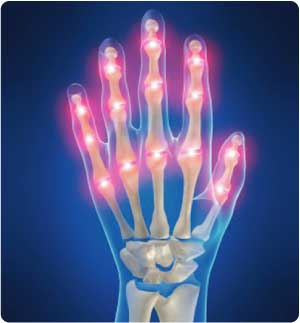Article
Most Rheumatologists Ignore Established Disease Assessment Tools
Author(s):
Although rheumatologists have an array of disease measurement tools to choose from, they generally choose to ignore all of them when they're assessing rheumatoid arthritis (RA) patients.

Although rheumatologists have an array of disease measurement tools to choose from, they generally choose to ignore all of them when they’re assessing rheumatoid arthritis (RA) patients, Jeffrey R. Curtis, MD, MPH, MS, Associate Director of the Center for Education and Research on Therapeutics of Musculoskeletal Disorders at the University of Alabama at Birmingham School of Medicine, said at the American College of Rheumatology (ACR) 2013 Annual Meeting in San Diego, CA.
Even when physicians do take some time out to assess disease activity in their RA patients, Curtis said they either measure erythrocyte sedimentation rate (ESR), C-reactive protein (CRP), and cyclic citrullinated peptide (CCP) antibody levels through laboratory testing, or rely on what he called the “‘How Ya Doin’?’ Brooklyn Health Assessment Questionnaire (HAQ),” which happens more frequently.
“You can’t put someone in the RA remission category just based on that kind of Gestalt assessment,” Curtis said at the start of the “Fine Tuning Your Skills in Utilizing Disease Activity Measurement Tools for RA” session. “Or maybe it’s just as good to do that as it is to do a joint count, but where’s the data to show it?”
As Curtis pointed out that the 2012 update of 2009 ACR practice guidelines says “it’s not possible or appropriate to mandate the use of a single disease activity score (DAS) for an individual physician,” Arthur M. Mandelin, MD, PhD, Assistant Professor of Medicine-Rheumatology at Northwestern University Feinberg School of Medicine, walked attendees through 4 available disease assessment tests — the HAQ, the Routine Assessment of Patient Index Data (RAPID3), the Clinical Disease Activity Index (CDAI), and the DAS based on 28 joints (DAS28) — although he was quick to note that “by no means do I intend to tell you that these are the 4 sublime tests that we should all be using.”
Briefly explaining the pros and cons of each of those tests, Mandelin said the major downside to the HAQ and RAPID3 tests is that they both rely on self-reported subjective patient data, although their advantage is that they can be administered in the waiting room or online ahead of an office visit, and thus require no effort on the part of the physician. While the CDAI and DAS28 joint tests are more objective than subjective, the CDAI lacks criteria for disease improvement from visit to visit, and the DAS28 undervalues patients’ lower extremities and completely overlooks their feet, he added.
Turning the focus away from the tests’ weaknesses, Curtis shed some additional light on the reasons why RA measurement tools remain extensively underutilized in practices by listing off — and pushing back on — the most common excuses that rheumatologists provide, including lack of time and unclear value of the information.
“You say, ‘insurance companies will use the information against me’; they’re insurance companies, of course they will. But we need to beat them to it,” Curtis said. “We need to be leading — rather than resistant and lagging — on how these rules get implemented in managed care.”
From an RA patient’s perspective, Amye L. Leong, MBA, President and CEO of health advocacy consulting firm Healthy Motivation, said the problem with disease assessment tools like the DAS28 is that they “don’t capture the real pain and function picture, because I could never get to my doctor while I was in an RA flare.”
“We need to find a way for patients to complete the DAS28 while they’re in a flare, like filling it out on an iPad and emailing it to their physician,” Leong added. “That way, their physician can calculate a score that reflects when the flare happens, and not 2 weeks later.”
Addressing that issue, Curtis explained that his clinic has implemented the Rheumatoid Arthritis Disease Activity (READY) measurement tool on the iPad, which he said collects patient-reported answers to the aforementioned tests more rapidly and accurately than traditional paper methods.




